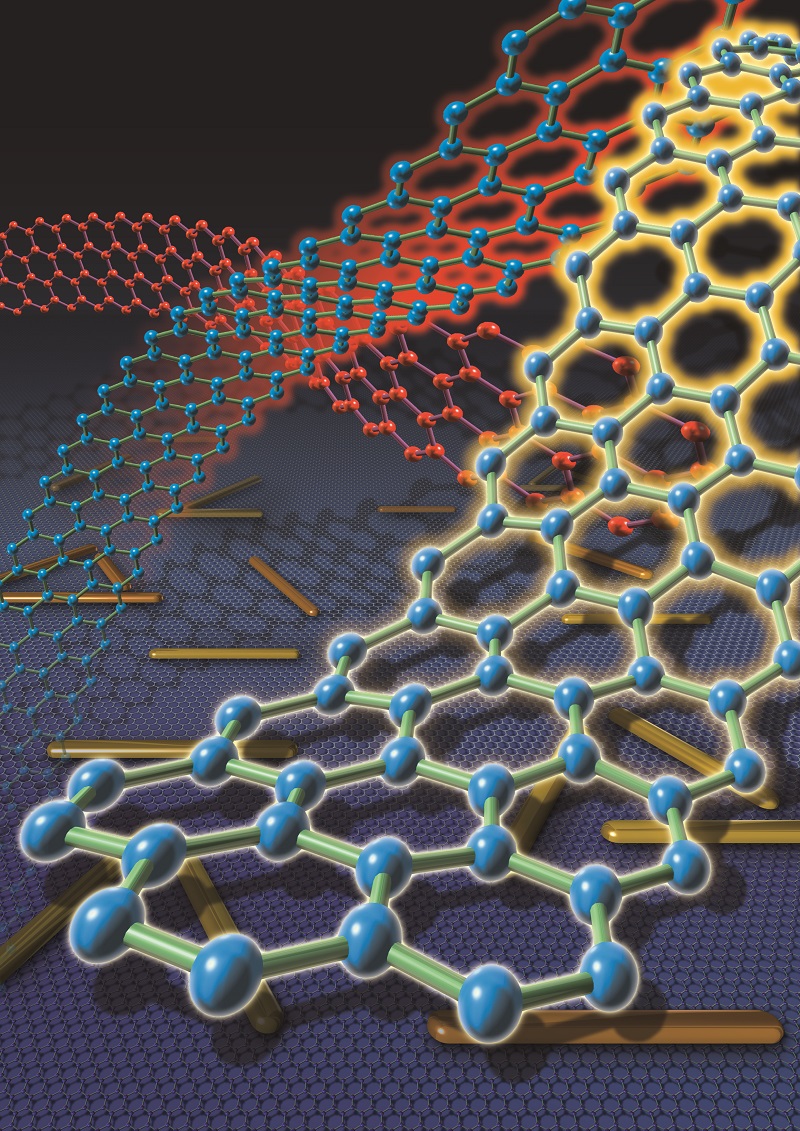The thinnest ribbon in the world!? Graphene nanoribbons produced by novel top-down and bottom-up hybrid process


An image of inorganic nanowires self-assembled on graphene and graphene nanoribbons fabricated using those nanowires. Both the nanowires and the graphene nanoribbons are found to be aligned in zigzag-edged directions.
© 2015 Aki Sato.
Researchers at the University of Tokyo have successfully produced graphene nanoribbons by making use of the phenomenon that inorganic nanomaterials self-assemble into regular structures on graphene. This will enlarge the possible applications of graphene, which is expected to be an important alternative material to silicon for semiconductor devices.
Institute of Industrial Science Professor Shoji Takeuchi and Project Assistant Professor Won Chul Lee first found that gold(I) cyanide nanowires grow directly on pristine graphene in aqueous solution at room temperature, the molecules aligning themselves with the zigzag lattice directions of the graphene. The researchers then fabricated graphene nanoribbons with zigzag-edged directions by employing the synthesized nanowires as an etching mask. The graphene nanoribbons created were 10 nm in width and as thin as a single carbon atom. Both the nanowires and graphene nanoribbons formed along the zigzag lattice, offering a potential method for controlling the formation direction of graphene nanoribbons, something that had not been realized until now.
This result is now available in Nature Nanotechnology.
This research is a collaboration between the University of Tokyo, University of California at Berkeley, Ulsan National Institute of Science and Technology, Harvard University, Konkuk University and Lawrence Berkeley National Laboratory, as a part of ERATO “Takeuchi Biohybrid Innovation Project” by the Japan Science and Technology Agency.
Press release (Japanese)
Paper
, "Graphene-templated directional growth of an inorganic nanowire", Nature Nanotechnology Online Edition: 2015/3/24 (Japan time), doi: 10.1038/nnano.2015.36.
Article link (Publication)
Links
Institute of Industrial Science
Department of Mechano-Informatics, Graduate School of Information Science and Technology
Department of Life Sciences, Graduate School of Arts and Sciences






